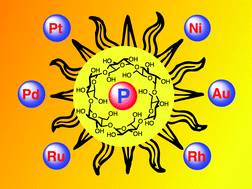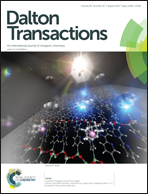Cyclodextrin and phosphorus(iii): a versatile combination for coordination chemistry and catalysis†
Abstract
With the advent of efficient methods for functionalising cyclodextrins, the synthesis of a variety of cyclodextrin-based P(III) ligands has been made possible. Capable of acting both as first and second coordination sphere ligands towards various transition metals, these compounds have found many applications in homogeneous catalysis. This perspective article describes the different approaches that have been used to covalently associate the ubiquitous P(III) donor atom with a cyclodextrin cavity. In addition, special emphasis is placed on the influence the cyclodextrin receptor has on the coordination and catalytic properties of these cavity-shaped ligands.


 Please wait while we load your content...
Please wait while we load your content...